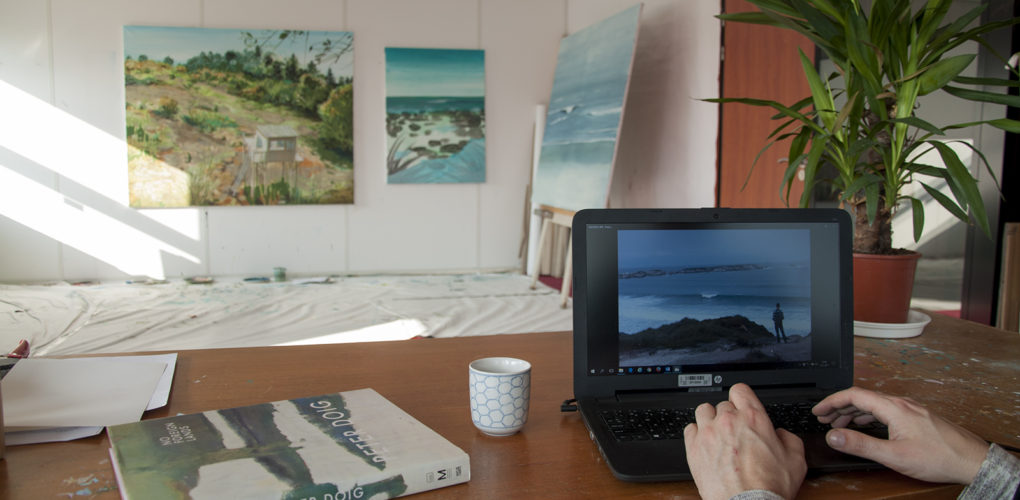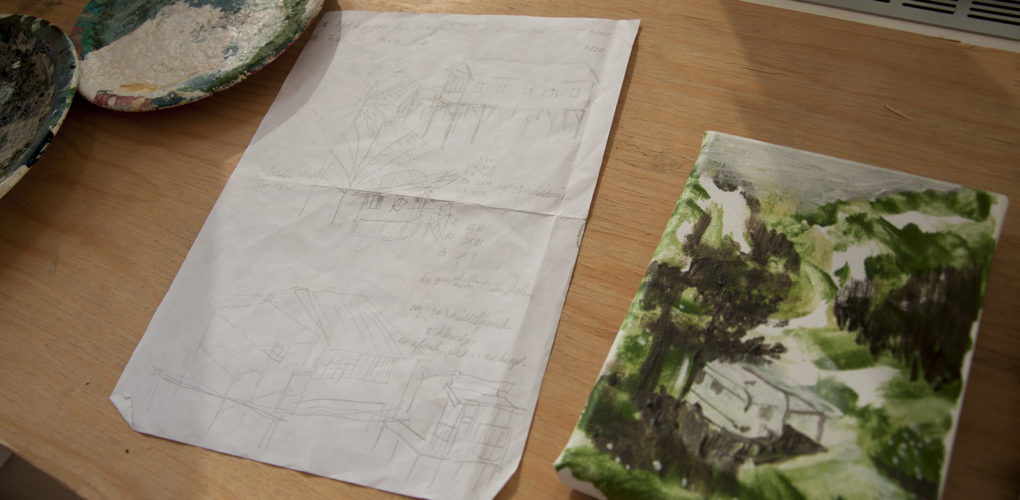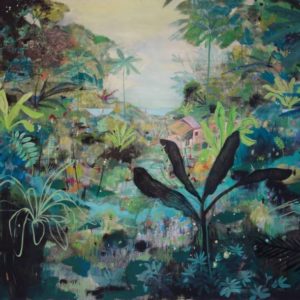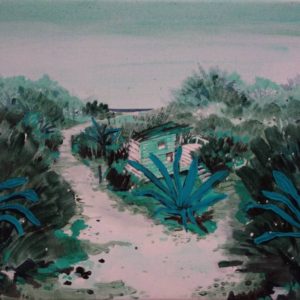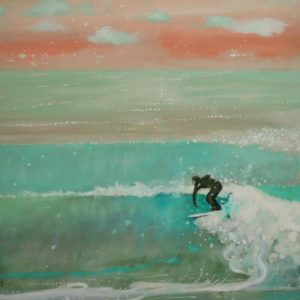One to Watch
 Peter de Boer creates nostalgic, organic landscapes
Peter de Boer creates nostalgic, organic landscapes
Peter de Boer’s landscapes transport us to a simpler time. Inspired by the organic forms and lush shades of the natural world, he is interested in exploring both the harmonious and destructive sides of the relationship between man and nature. Manmade structures like tents and treehouses dot his otherwise sublime scenes, calling to mind associations of childhood nostalgia and a growing human presence in the natural world. This longing for the past is evident in his practice as well– he works with traditional oils and egg tempera.
Peter studied at the Amsterdam University of the Arts, Netherlands. He has exhibited his works extensively in the Netherlands, including at Galerie Posthuys, SBK Breda, and Rotterdam Contemporary Art Fair. He is currently preparing for an upcoming exhibition at LUX Art Institute in Encinitas, California.
What are the major themes you pursue in your work?
The first time I visited my wife’s granddad in Borneo, something weird happened. Driving through the Eastern Malaysian landscape, I suddenly was in the middle of my own paintings. Jungle all around me with here and there a small cabin. Something I had been painting for years!
Why do I paint these landscapes? Above all, I see beauty in the many shades of green, the organic forms of the plants, and the organized chaos. I paint utopic nature scenes and like the contrast that comes into existence when I place a manmade structure in it, which transforms these rough landscapes to cultivated places. I’m also worried about the fast destruction of these landscapes and all other nature. My landscapes now still exist but will most likely disappear in our near future.
My works are nostalgic, a run away, a memory, a scream. They express the longing for a return to simplicity and nature which I, and maybe you too, behold more and more in our troubled world. But at the same time, these beg the question if it is possible that mankind and nature live in harmony. Most of us wouldn’t know how to survive if we were too far separated from our save cultivated landscape. This contrast of the beauty and danger of nature attracts me. In Borneo a local told me; “No need lah, to go into the jungle.” That place is not for recreation.
How did you first get interested in your medium, and what draws you to it specifically?
Eight years ago I saw a good friend and painter from Germany paint with eggs and pigments. I was amazed by the opportunities of this medium. Since then, I mostly work with egg tempera that I produce myself. This is a centuries-old technique in which you use paint from a mix of dyes from egg, linseed oil, and turpentine. It makes you feel a bit like a scientist, precisely mixing the ingredients to get the best results.
The egg works as an emulsifier between water and oil. That makes your paint dry fast like acrylic and stay shiny like oil paint. By applying several layers, it creates a depth that allows you to enter the painting. And this is exacly what draws me to this medium, creating a visual world on a canvas that feels like you could enter it physically. Then the painting comes to life.
How has your style and practice changed over the years?
The longer I paint, the better I know where it takes me. In the 20 years that I’ve been painting now, I’ve discovered many things I can do with paint. Watching and learning from all those who painted before me and those who are painting with me. And of course by learning from my own paintings, the process of development never stops. My style becomes stronger, more layered, and refined by the knowledge that I gain.
The moment I find myself dancing in front of a work I’m painting on, I know I made a key work. That moment I explore and realize I invented something new, new themes or ways to paint, that opens exciting new possibilities.
Can you walk us through your process? Do you begin with a sketch, or do you just jump in? How long do you spend on one work? How do you know when it is finished?
I guess I do both. Often I use photos as a starting point. Photography is a fast way to capture moments, catching details and creating useful images when you don’t have the time to make a sketch. I select images that interest me. Then I combine photos or make small sketches for the right composition and add things I feel are missing in the picture. But well, sometimes I have something in my mind and just jump in.
When I paint, the photo becomes less and less important. The process of painting takes over. I work fast, but I can take hours standing or sitting in front of the work overthinking my next move.
Because I work in layers which have to dry, I work on more than one painting at the same time. Sometimes I leave a painting for a week before I catch up again. Time doesn’t say a thing to me. Often a work produced quickly means there was focus and knowledge to make that possible. For me, a painting is finished when the layers allow me to enter it.
What are some of your favorite experiences as an artist?
Nothing beats being in my studio, putting on some music, drinking a coffee and starting on a painting. That’s what it’s all about. But recently I received an email from California. A local surfer, who bought my work on Saatchi, reached out to explore the possibilities for a collaboration. The idea for now is to have an exhibition, to do a massive mural and an ‘artist talk’ about my work. I’m looking forward to this experience!
Who are your favorite writers?
I love the books of adventurer Ed Stafford. He walked the Amazon, lived on a desert island, and so on. His goal is to prove you need nothing but knowledge to travel in unknown territory nature. He shows us how nature takes us back to simplicity and the basics and makes you appreciate life.



